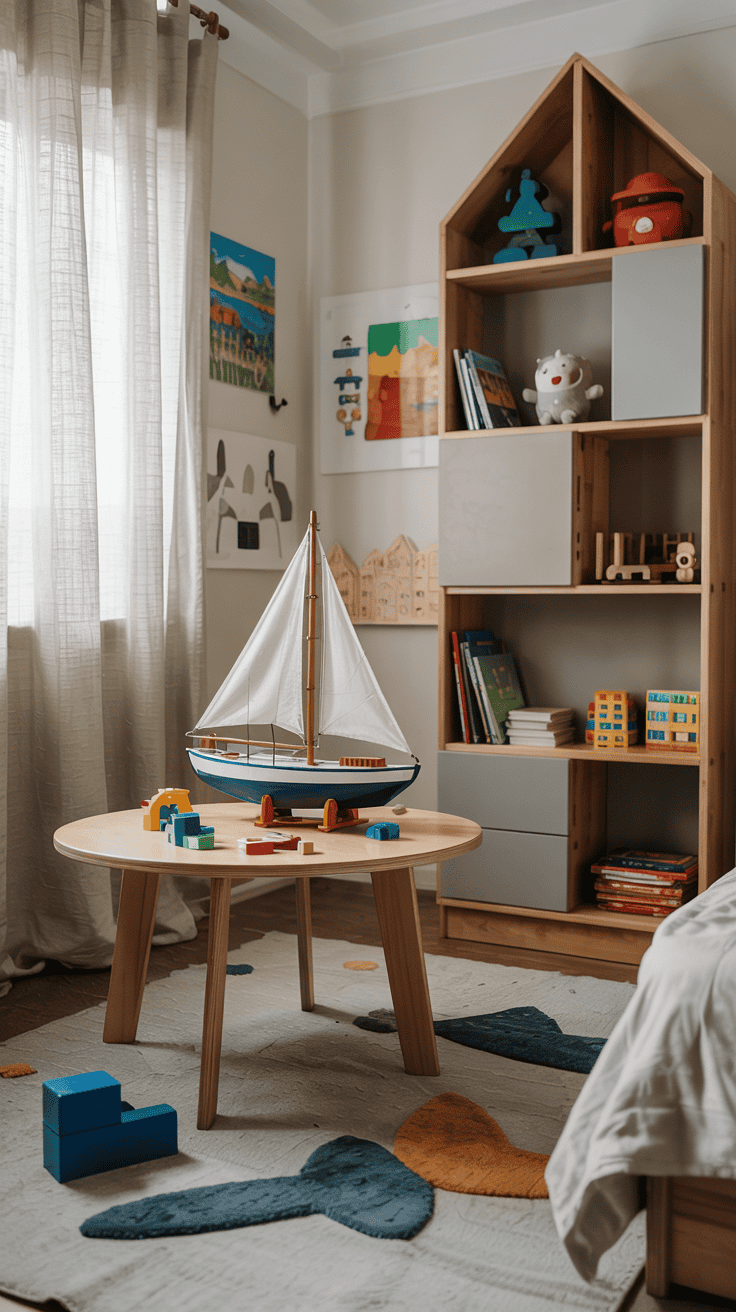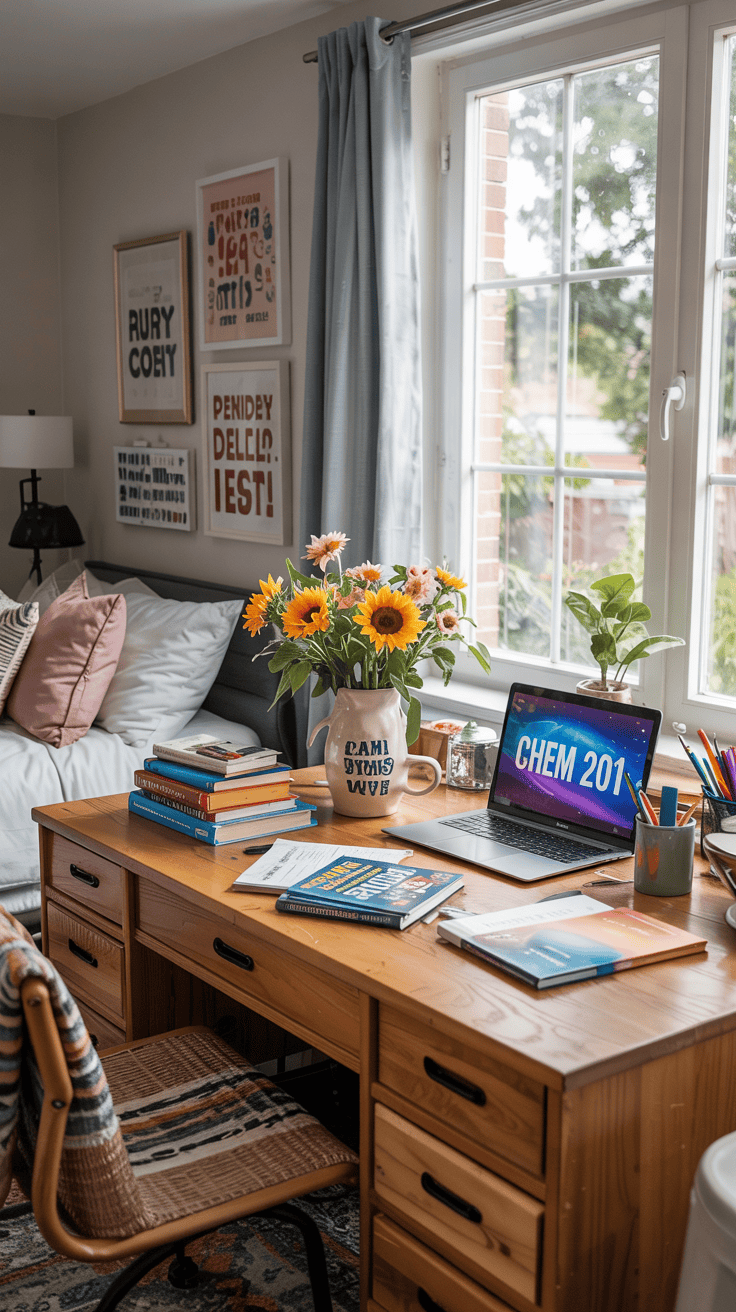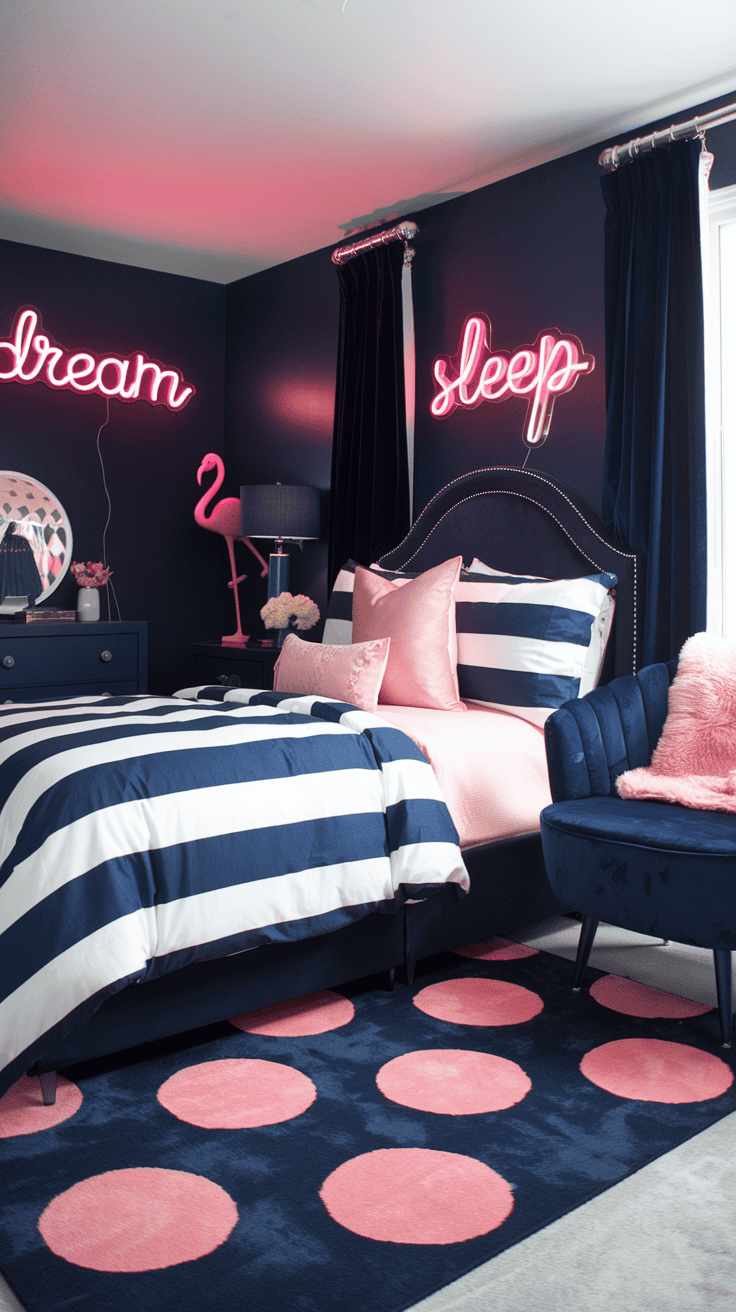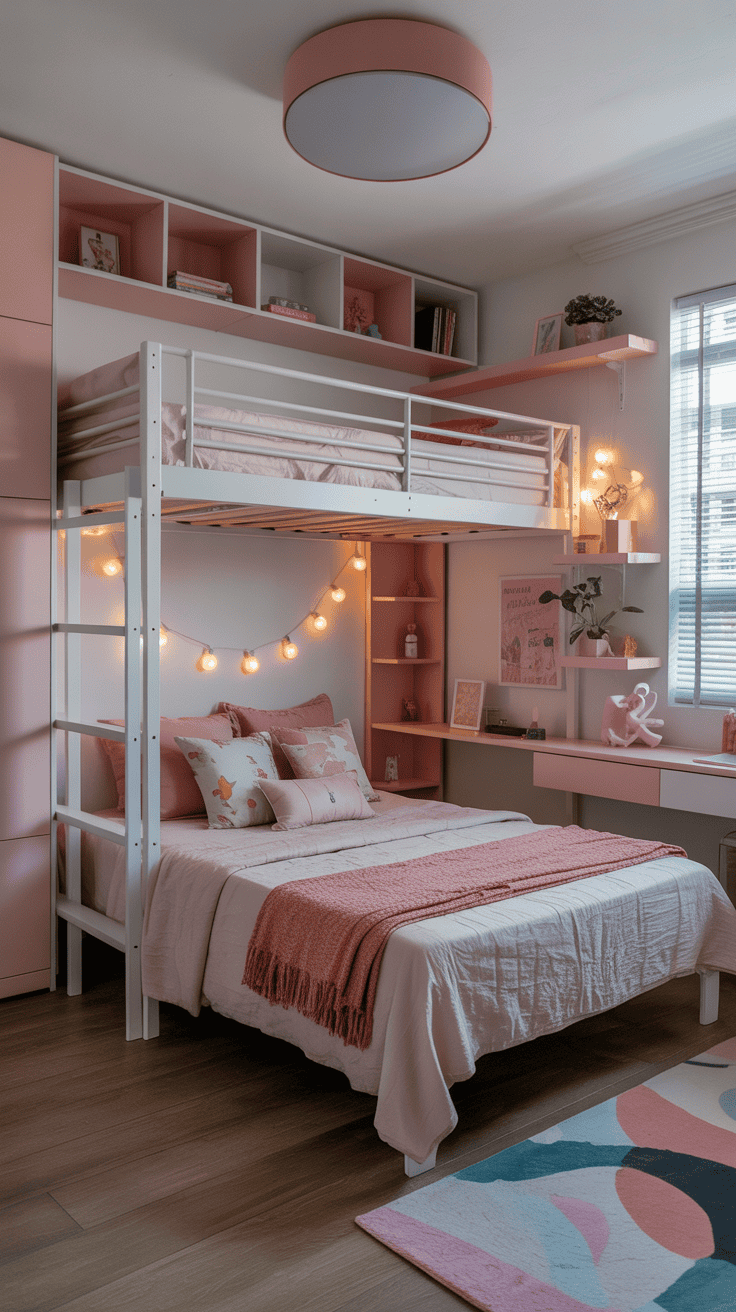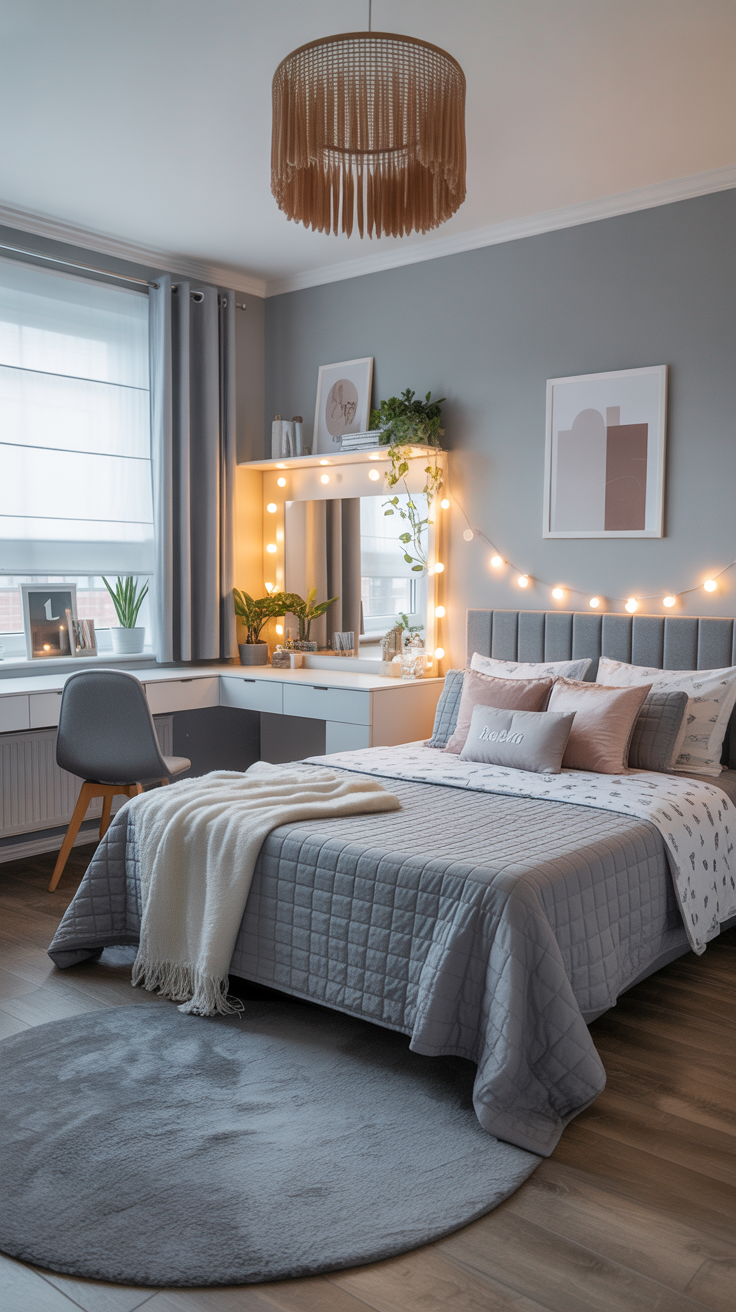This post shows 10 Genius Small Bedroom Ideas for Kids!
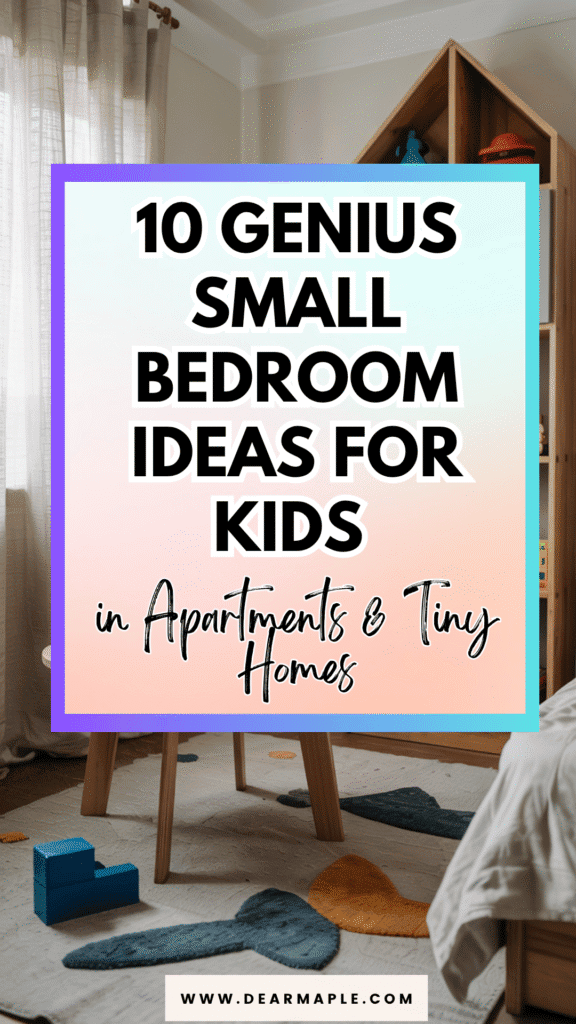
Does your child’s bedroom feel more like a cramped closet than a magical sanctuary? You’re not alone. With housing costs soaring and apartment sizes shrinking, millions of families are wrestling with the challenge of creating functional, fun spaces for their kids in impossibly small rooms. The good news? Small doesn’t have to mean sacrificing style, storage, or your child’s happiness.
Whether you’re dealing with a shoebox-sized bedroom in a city apartment or trying to squeeze two kids into a space barely big enough for one, these genius space-saving solutions will transform your tiny room into a wonderland that works. From clever storage hacks that hide clutter in plain sight to multi-functional furniture that does double duty, these ideas prove that the best things really do come in small packages.
Ready to turn your space challenges into opportunities? Let’s dive into ten brilliant strategies that will make your small bedroom feel twice as big and ten times more magical. Your kids will never believe such an amazing room could fit in such a tiny space.
10 Genius Small Bedroom Ideas for Kids
1. Go Vertical with Loft Beds
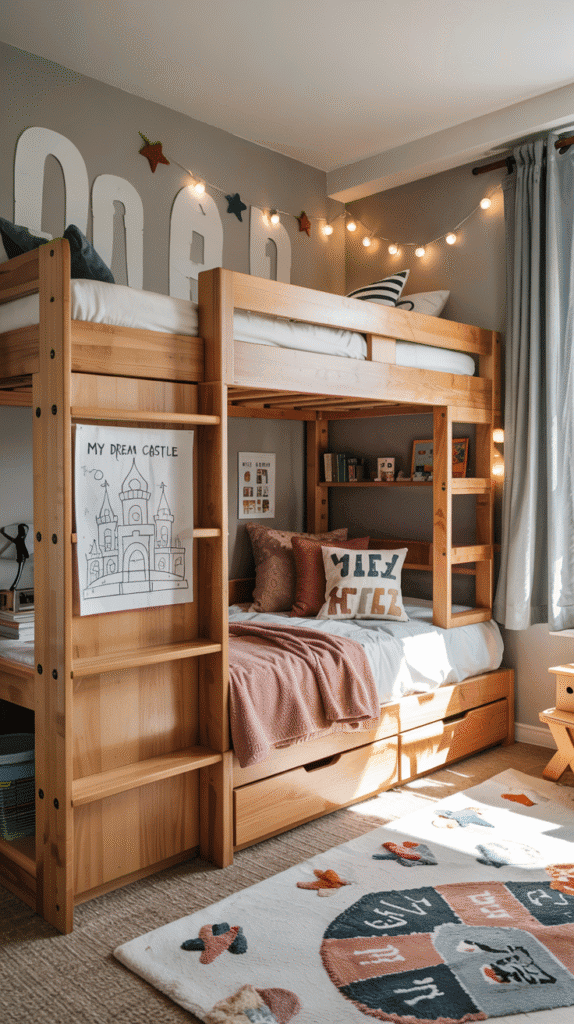
When floor space is at a premium, the secret is to think up – literally. Loft beds are the ultimate space-saving superhero, instantly doubling your usable room by elevating the sleeping area and freeing up precious square footage below. This vertical approach transforms a cramped bedroom into a multi-functional wonderland where sleeping, playing, and studying can all coexist harmoniously.
The beauty of loft beds lies in their incredible versatility. The space underneath becomes a blank canvas for creativity – install a cozy reading nook with soft cushions and twinkling lights, create a dedicated homework station with a built-in desk, or design the ultimate play zone complete with toy storage and activity areas. For teens, this under-bed space can become a private hangout spot with bean bags and a small TV, giving them the independence they crave in a compact footprint.
Safety should always be your top priority when considering loft beds. Most manufacturers recommend these elevated sleeping solutions for children six years and older, as younger kids may not have developed the coordination needed to safely navigate the ladder. Look for beds with sturdy guardrails that extend at least five inches above the mattress surface, and ensure the ladder has anti-slip treads. The ceiling height in your room should allow for at least 30 inches between the mattress top and ceiling to prevent bumped heads during those middle-of-the-night movements.
Modern loft beds come in countless configurations to match your specific needs and style preferences. Low loft beds, which sit closer to the ground, work perfectly in rooms with standard ceiling heights while still providing ample underneath storage. Full-height lofts maximize vertical space in rooms with high ceilings. Some models feature built-in desks, dressers, or even additional sleeping areas for siblings, making them complete bedroom solutions rather than just elevated beds.
2. Built-in Storage Benches and Window Seats
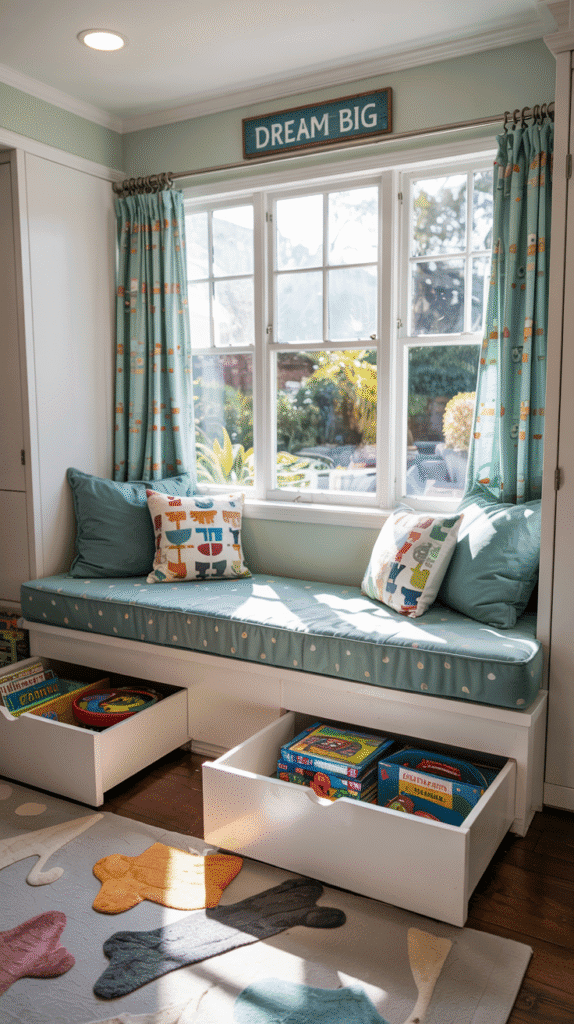
Every small bedroom has those awkward spaces that seem impossible to use effectively – the area under a window, a narrow wall, or that odd corner that’s too small for regular furniture. Built-in storage benches and window seats transform these overlooked spaces into valuable real estate that serves multiple purposes while adding charm and functionality to your child’s room.
Window seats create an enchanting reading nook that feels like a secret hideaway, complete with soft cushions, throw pillows, and perhaps a small bookshelf within arm’s reach. Children naturally gravitate toward these cozy spots, making them perfect for quiet time, homework, or simply daydreaming while watching the world outside. The magic happens when you lift that cushioned seat to reveal spacious storage underneath – perfect for stashing seasonal clothing, extra bedding, toys that aren’t used daily, or books that have outgrown the main bookshelf.
Built-in benches along walls serve similar dual purposes while maximizing every inch of available space. These custom solutions can be designed to fit your room’s exact dimensions, ensuring no space goes to waste. Consider adding cubbies or drawers within the bench design for even more organized storage options. The top surface provides additional seating for friends during playdates or can serve as a display area for favorite toys and decorations.
The key to successful built-in storage is planning for both current and future needs. Design compartments of varying sizes to accommodate everything from small toys and art supplies to larger items like sports equipment or school projects. Soft-close hinges prevent little fingers from getting pinched, while safety stays keep heavy lids from slamming shut. Adding labels or color-coding systems helps children maintain organization independently, turning cleanup time into a manageable routine rather than an overwhelming chore.
3. Wall-Mounted Folding Desks

Homework time doesn’t have to mean sacrificing play space, even in the tiniest bedrooms. Wall-mounted folding desks are ingenious space-savers that appear when you need them and disappear when you don’t, giving your child a proper study area without permanently claiming precious floor space. These clever solutions fold flat against the wall when not in use, maintaining the room’s open feel while ensuring academic success never takes a backseat to space constraints.
The transformation is almost magical – one moment your child has a spacious play area, and with a simple flip down motion, they have a full-sized desk complete with storage compartments, pencil holders, and enough surface area for homework, art projects, or computer work. This instant workspace eliminates the need for a permanent desk that would dominate a small room, allowing the space to adapt to your child’s changing needs throughout the day.
Modern folding desk designs go far beyond basic functionality. Many models include built-in organizers, small shelves for books and supplies, and even charging stations for tablets or laptops. Some feature bulletin boards or whiteboards on the inside surface, creating an all-in-one study command center. The folding mechanism should be smooth enough for your child to operate independently while being sturdy enough to handle daily use and the occasional lean or bump during intense study sessions.
Installation is crucial for both safety and functionality. These desks must be securely anchored to wall studs to handle the weight of the desk surface plus books, supplies, and the occasional elbow lean. Consider the height carefully – the desk should be at an appropriate level for your child now while allowing for some growth. Some adjustable models can be repositioned as your child grows, making them a long-term investment in their educational success.
4. Under-Bed Drawers and Rolling Storage
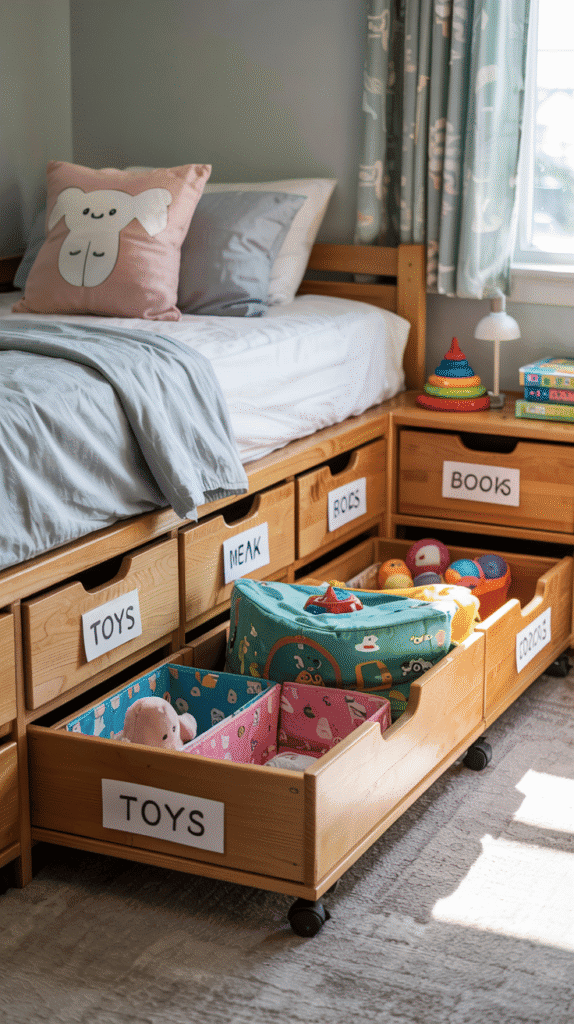
The space under your child’s bed is prime real estate that’s often completely wasted or turned into a black hole where toys go to disappear forever. Strategic under-bed storage transforms this hidden area into an organized treasure trove that keeps belongings accessible yet out of sight, creating a cleaner, more spacious feeling room while solving storage challenges.
Built-in drawers that slide smoothly on quality tracks provide the most elegant solution, essentially turning the bed into a giant dresser. These drawers can be customized to fit your specific storage needs – shallow drawers for clothing and linens, deeper ones for toys and games, or specialized compartments for art supplies or collections. The key is choosing drawers with full-extension slides that allow complete access to the contents, preventing items from getting lost in the back corners.
Rolling storage bins offer more flexibility and work well with existing beds. These mobile solutions can be pulled out completely for easy access and moved around the room as needed. Clear containers let you see contents at a glance, while labeled opaque bins maintain a cleaner aesthetic. Consider using different colored bins for different categories – blue for sports equipment, red for art supplies, green for building toys – making cleanup games more engaging for younger children.
The beauty of under-bed storage lies in its invisibility. When properly organized, these systems keep rooms looking tidy while providing tremendous storage capacity. Teach children to use these spaces for items they don’t need daily access to – seasonal clothing, special occasion toys, or backup supplies. This strategy keeps everyday essentials easily accessible while preventing the room from feeling cluttered with every possession on display.
5. Ceiling-Hung Hammock or Swing Chair

Sometimes the most magical bedroom additions are the ones that literally lift spirits – and kids – off the ground. Ceiling-hung hammocks and swing chairs add an element of adventure and whimsy to small bedrooms while taking up absolutely zero floor space. These suspended sanctuaries become instant favorites, providing cozy retreats for reading, relaxing, or simply enjoying a gentle sway while daydreaming.
Hammocks create the ultimate chill-out zone, perfect for quiet activities like reading or listening to music. Choose models designed specifically for indoor use, with soft, breathable fabrics that won’t irritate skin during extended lounging sessions. Rope hammocks work well for older children and teens, while fabric hammocks with spreader bars provide more stability for younger kids. The gentle rocking motion has a naturally calming effect, making hammocks excellent for children who need help winding down at bedtime or managing stress.
Swing chairs offer a more structured seating option while still providing that fun, floating feeling kids love. Hanging egg chairs create cozy cocoons perfect for introspective children who crave a private space within their bedroom. Rope swings provide active fun and can help children with sensory needs regulate their bodies through movement. Some swing chairs even come with attached storage nets or cup holders, combining fun with functionality.
Safety considerations are paramount when installing any ceiling-hung furniture. These installations must be anchored into solid ceiling joists or use appropriate mounting hardware rated for well above the expected weight load. Professional installation is often worthwhile to ensure long-term safety and peace of mind. Consider the swing radius when positioning these pieces – ensure adequate clearance from walls, furniture, and lighting fixtures to prevent accidents during enthusiastic play sessions.
6. Multi-Functional Furniture Pieces

In small spaces, every piece of furniture needs to earn its keep by serving multiple purposes. Multi-functional furniture is the secret weapon of smart small bedroom design, providing two, three, or even four functions in the footprint of a single piece. These clever designs maximize utility while minimizing clutter, creating rooms that work harder and feel larger than their actual square footage suggests.
Storage ottomans exemplify brilliant multi-functional design – they provide comfortable seating for reading or putting on shoes, offer a flat surface for games or snacks, and hide significant storage capacity inside for toys, books, or clothing. Choose ottomans with firm tops that can safely support a child’s weight and easy-access storage that won’t pinch fingers. Some models feature removable trays on top, creating instant table surfaces for activities or snacks.
Beds with built-in storage take multi-functionality to the next level, incorporating drawers, shelves, or compartments directly into the bed frame design. Captain’s beds feature multiple drawers around the perimeter, effectively replacing a separate dresser. Some models include built-in desks, bookshelves, or even additional sleeping areas for sleepovers. These comprehensive solutions work particularly well in studio apartments or single-room living situations where the bedroom must serve multiple functions.
Convertible pieces that grow and change with your child represent the ultimate investment in multi-functional furniture. Cribs that convert to toddler beds, then to full-size beds ensure years of use from a single purchase. Adjustable-height desks accommodate growing children while changing table surfaces can be repositioned for different activities. These adaptable pieces reduce the need for frequent furniture replacement while maintaining perfect functionality as your child’s needs evolve.
7. Creative Wall Storage Solutions
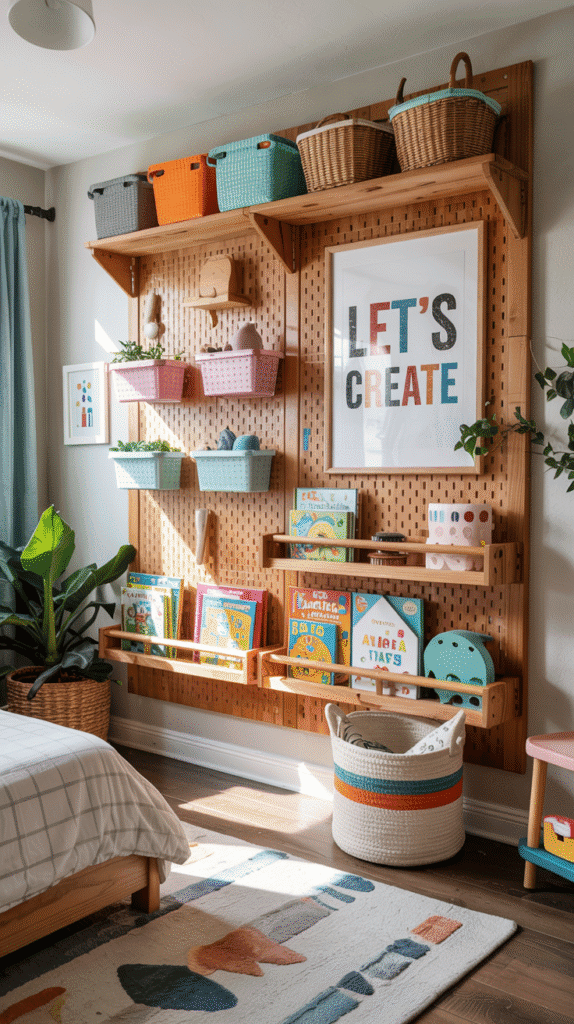
When floor space is limited, walls become your best friends for storage and organization. Creative wall storage solutions keep belongings accessible and organized while adding visual interest and personality to small bedrooms. The key is thinking beyond traditional shelves to create storage systems that are both functional and decorative, turning necessary organization into room design features.
Pegboards offer incredible versatility and can be customized endlessly as your child’s needs change. Originally designed for workshops, these perforated panels have evolved into stylish organization systems perfect for children’s rooms. Colorful pegs, hooks, small shelves, and containers can be rearranged whenever needed, making it easy to adapt storage as toy collections change or as children grow. Paint pegboards in fun colors or patterns to match room decor, or leave them natural for a more sophisticated look.
Floating shelves maximize wall space without overwhelming small rooms visually. Install them at varying heights to create interesting displays while keeping frequently used items within easy reach. Corner floating shelves utilize otherwise wasted space and work particularly well for displaying collections or favorite books. Consider installing shelves with built-in lighting to create cozy reading nooks or highlight special treasures.
Wall-mounted cubbies and compartments provide defined spaces for different types of belongings while maintaining clean lines that don’t visually clutter small rooms. Modular cube systems can be arranged in countless configurations and easily reconfigured as needs change. Some systems include fabric bins or baskets that slide in and out, hiding clutter while maintaining easy access. Install these systems at appropriate heights for your child’s age, ensuring independence in maintaining organization.
8. Compact Play Areas in Corners

Every room has corners, and in small bedrooms, these 90-degree angles represent untapped potential for creating dedicated play zones that don’t interfere with other room functions. Corner play areas maximize awkward spaces while giving children defined areas for different activities, helping maintain organization and creating natural boundaries within multi-purpose rooms.
Corner reading nooks transform unused spaces into literary havens that encourage quiet play and learning. Install corner shelving units that utilize both wall surfaces, creating extensive book storage in a compact footprint. Add soft seating like a small bean bag or floor cushions, and consider string lights or a small lamp to create warm, inviting ambiance. These cozy retreats become natural gathering spots for bedtime stories or independent reading time.
Activity corners work particularly well for art supplies, building toys, or other hands-on play that benefits from contained spaces. Corner-fitted tables provide work surfaces without protruding into room traffic patterns, while vertical storage keeps supplies organized and accessible. Consider installing a small bulletin board or magnetic board on the corner walls to display artwork or important reminders, making the space feel officially designated for creative pursuits.
The key to successful corner play areas is ensuring they feel intentional rather than cramped. Use consistent colors or themes to visually connect the corner elements with the rest of the room, preventing the space from feeling like an afterthought. Adequate lighting is crucial – corners often receive less natural light, so plan for additional illumination to keep these areas bright and welcoming throughout the day.
9. Shared Spaces with Smart Dividers

When siblings share small bedrooms, creating individual space and privacy becomes both more challenging and more important. Smart dividers and strategic layout choices can transform a single small room into two distinct personal areas, giving each child a sense of ownership and privacy while maintaining the functionality of the shared space.
Curtains offer the most flexible and budget-friendly division solution, providing instant privacy that can be opened or closed as needed. Ceiling-mounted track systems allow curtains to slide smoothly and can be configured in various patterns – straight across for simple division, or in L-shapes to create more complex room arrangements. Choose fabrics that complement the room’s decor while providing adequate opacity for privacy. Blackout curtains work particularly well for children with different sleep schedules.
Bookcase dividers serve dual purposes by creating physical separation while providing valuable storage space accessible from both sides. Open-back bookcases maintain visual flow between areas while clearly defining separate spaces. These dividers can hold books, toys, and personal belongings, giving each child dedicated storage within their area. Consider cases with different shelf heights to accommodate various item sizes and prevent the divider from feeling monotonous.
Strategic furniture placement can create natural divisions without additional installations. Position beds at angles to create separate sleeping areas, or use dressers and desks as room dividers while maintaining their primary functions. Area rugs help define individual spaces and can introduce different colors or patterns to give each child a distinct area that reflects their personality. The goal is creating separation that feels natural rather than forced, maintaining the room’s overall harmony while respecting individual needs.
10. Convertible Rooms that Transform
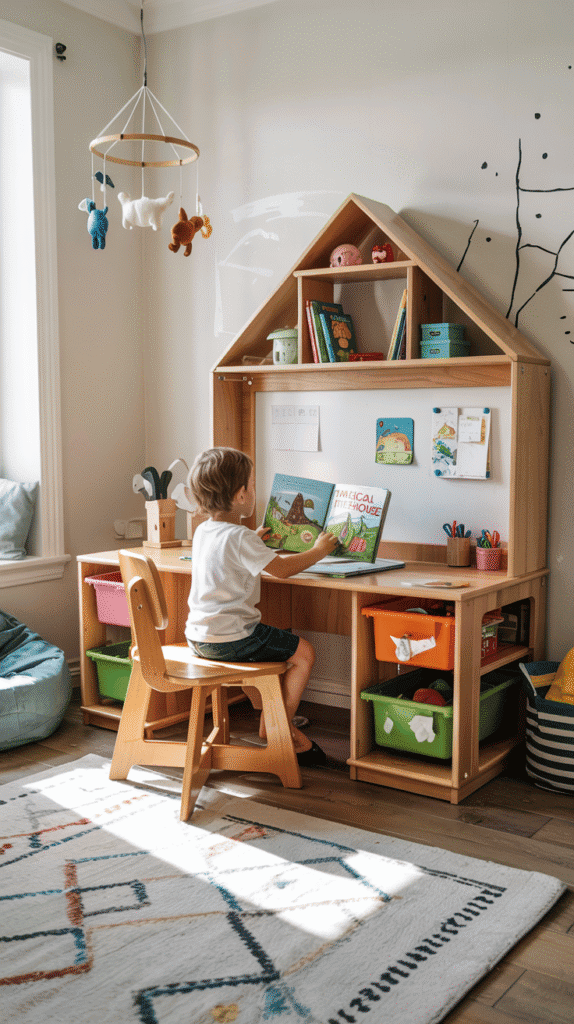
The ultimate solution for small bedrooms is creating spaces that can completely transform based on immediate needs. Convertible room designs use furniture on wheels, fold-away elements, and flexible layouts to shift from peaceful bedroom to active playroom to focused study space throughout the day, maximizing the utility of every square foot.
Mobile furniture pieces are the foundation of convertible room design. Beds on locking casters can be moved against walls during play time, creating open floor space for activities. Rolling storage units serve as toy chests during play time and can be repositioned as room dividers or work surfaces when needed. Even lightweight chairs and tables on wheels allow for quick room reconfiguration based on the activity at hand.
Fold-away elements provide full functionality when needed and completely disappear when not in use. Wall-mounted drop-down tables create instant craft or homework surfaces that fold flat against walls afterward. Murphy beds take this concept to the extreme, providing comfortable sleeping spaces that fold up into wall units during the day, though these work best in rooms with adequate ceiling height and professional installation.
The key to successful convertible rooms is establishing simple systems that children can manage independently. Clear storage solutions help maintain organization during transitions, while labeled areas or color-coding systems make it easy to restore order after activities. Consider creating “transformation checklists” or picture guides showing how to reconfigure the room for different activities, turning room changes into fun routines rather than chores.
Conclusion
Small bedrooms don’t have to mean big compromises on style, function, or fun. These ten genius solutions prove that with creativity, smart planning, and the right strategies, even the tiniest spaces can become magical retreats that serve every need your child has. From vertical storage that doubles usable space to convertible elements that transform rooms throughout the day, these ideas turn space limitations into opportunities for innovation.
The secret to success lies in involving your children in the design process, ensuring the solutions work for their specific needs and preferences. What matters most isn’t the size of the room, but how well it serves the child who calls it home. Remember that cozy spaces often feel more secure and comfortable to children than vast rooms, and the creative solutions required by small spaces often result in more interesting, personalized environments.
Start with one or two ideas that address your biggest challenges, then gradually implement additional solutions as you see what works best for your family. Small changes can make dramatic differences, and you don’t need to renovate everything at once to see real improvements in functionality and happiness.
Bonus Tips for Small Bedroom Success
Lighting Solutions: Maximize natural light with sheer curtains and strategically placed mirrors that reflect light throughout the room. Add multiple light sources at different levels – overhead lighting for general illumination, task lighting for homework areas, and soft accent lighting for bedtime routines. Battery-operated LED strips work wonderfully for adding ambiance without electrical work.
Color Psychology: Light, cool colors make rooms feel larger and more open, while warm colors create cozy atmospheres. Consider painting the ceiling a lighter shade than walls to create the illusion of height. Monochromatic color schemes prevent visual clutter while allowing personality to shine through accessories and artwork.
Budget-Friendly DIY Options: Many storage solutions can be created using repurposed items and basic tools. Wooden crates become modular storage systems, tension rods create instant organization in closets, and adhesive hooks provide wall storage without permanent installation. Pinterest and YouTube offer countless tutorials for creating custom solutions at fraction of retail costs.
Safety First: Always prioritize safety over aesthetics, especially in small spaces where children might be climbing or reaching for items. Secure all tall furniture to walls, ensure adequate clearance around beds and play areas, and choose rounded corners on furniture whenever possible. Regular safety checks help identify potential hazards before they become problems.
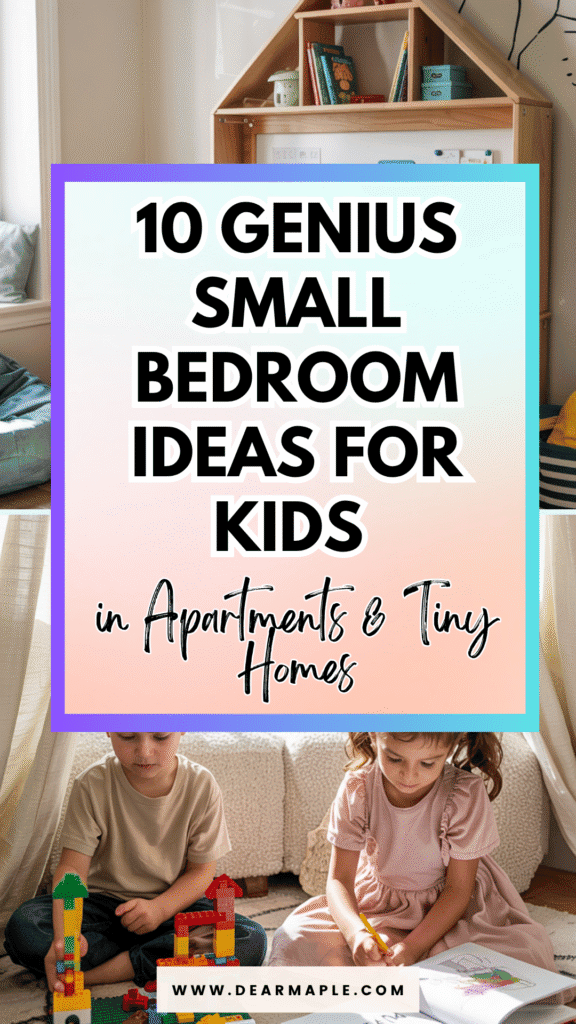
This post shows 10 Genius Small Bedroom Ideas for Kids!

